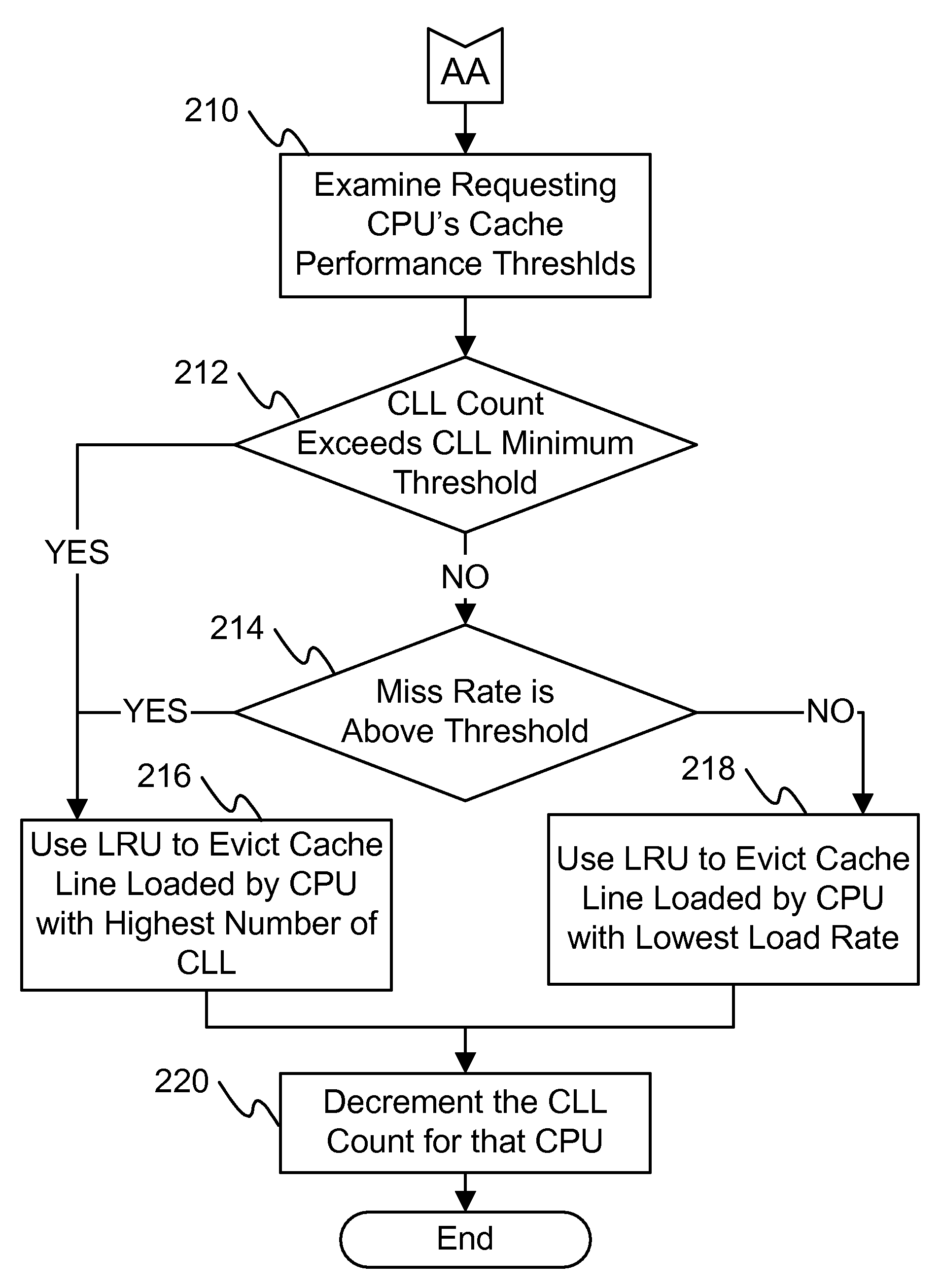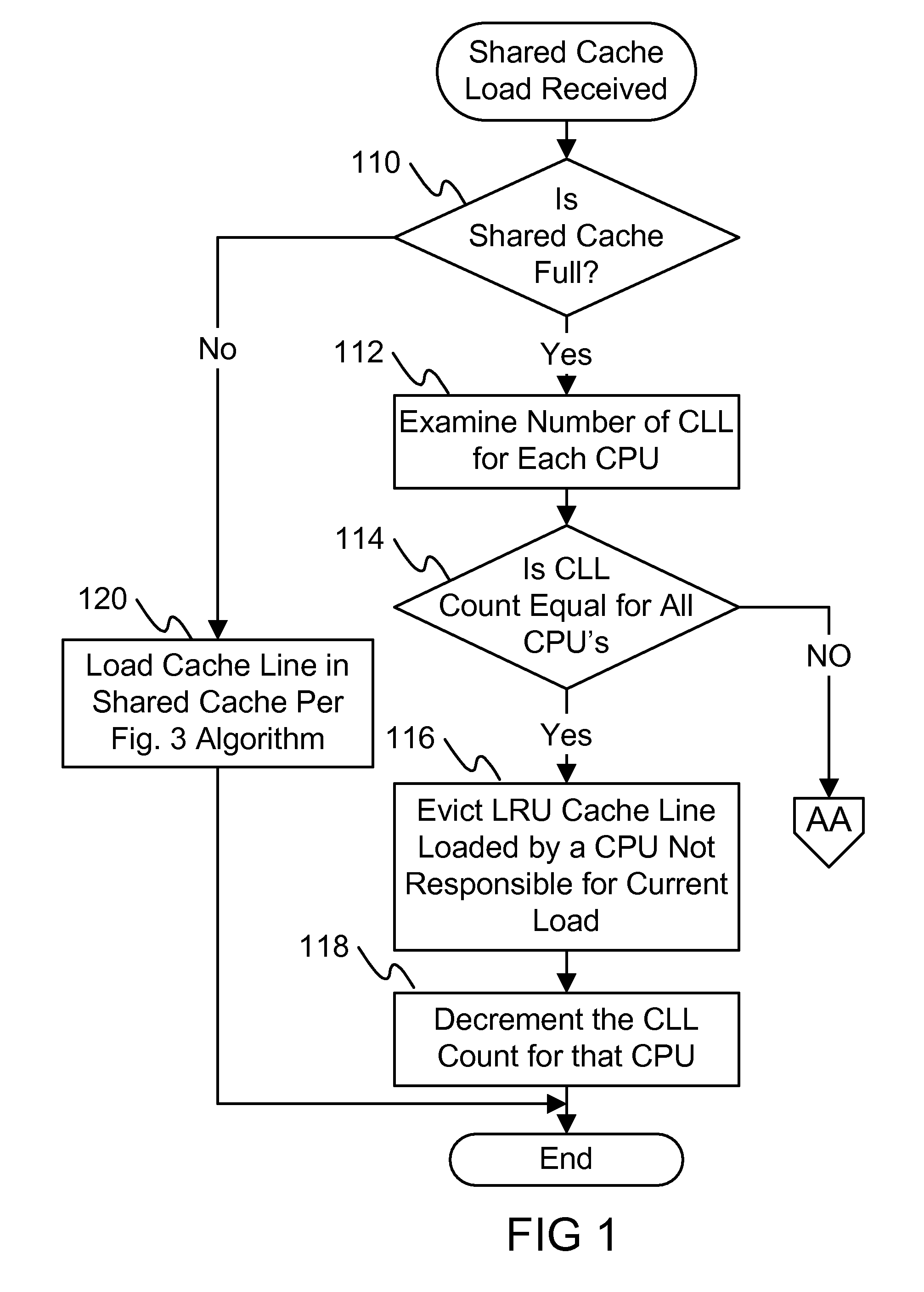Method and system for cache eviction
a cache and cache technology, applied in the field of cache eviction methods and systems, can solve the problems of increasing cache miss rate and hurting cache efficiency
- Summary
- Abstract
- Description
- Claims
- Application Information
AI Technical Summary
Benefits of technology
Problems solved by technology
Method used
Image
Examples
Embodiment Construction
[0009]This system (as one embodiment) describes a cache eviction method based on the CPU usage pattern of cache combined with known methods such as LRU and determines which CPU core should be targeted for LRU. This system is proposed for multiple core CPUs sharing a cache load tracker (CLT) module for the shared cache.
[0010]Every cache line loaded to cache is marked by the ID of the CPU core requesting its load to later be able to identify and evict the cache lines based on its original requesting CPU core or any identified CPU.
[0011]A cache load tracker (CLT) module is responsible for tracking the number of cache lines loaded (CLL) into cache per individual CPU core. CLT also measures the load or miss rate on a separate set of memory locations for each CPU core.
[0012]One way to achieve this is based on a running average over a predetermined number of most recent misses. For example, the rate of miss for each CPU core will be the number of loads requested by that core within the las...
PUM
 Login to View More
Login to View More Abstract
Description
Claims
Application Information
 Login to View More
Login to View More - R&D
- Intellectual Property
- Life Sciences
- Materials
- Tech Scout
- Unparalleled Data Quality
- Higher Quality Content
- 60% Fewer Hallucinations
Browse by: Latest US Patents, China's latest patents, Technical Efficacy Thesaurus, Application Domain, Technology Topic, Popular Technical Reports.
© 2025 PatSnap. All rights reserved.Legal|Privacy policy|Modern Slavery Act Transparency Statement|Sitemap|About US| Contact US: help@patsnap.com



